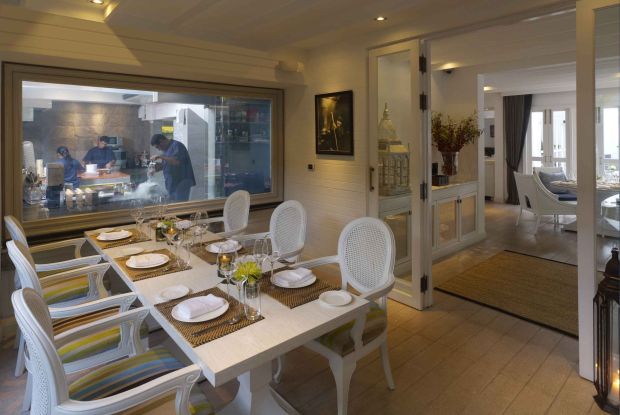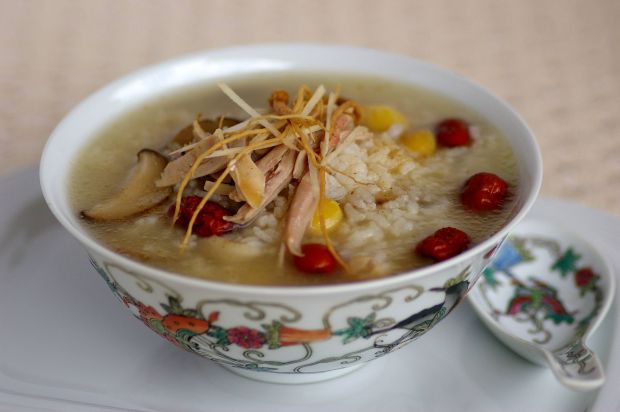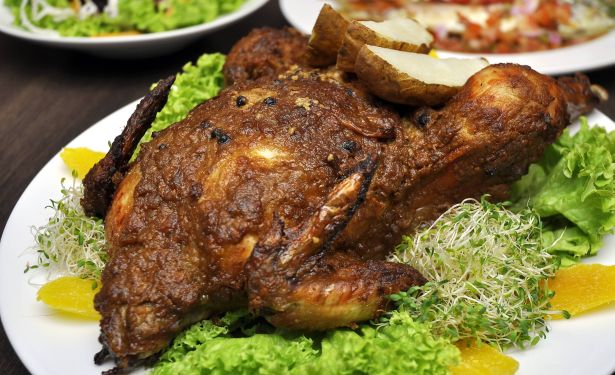Kolkata-born Chef Gaggan Anand tinkers with molecular cooking techniques at his Bangkok restaurant, Gaggan.
A BLISSFUL statue of Lord Ganesha takes pride of place at the entrance of Gaggan, the six-month-old eatery co-owned by Chef Gaggan Anand. It might be deceptive to think that the food here sways to the right side of convention, especially since the traditional white building in which the eatery is housed resembles the residence of a well-to-do Thai clan.
It’s a busy Thursday evening. The space with strategically placed freshly cut flowers together with all-white wicker furnishings is comfortable and cosy and has an interiors magazine feel to it. The downstairs dining space has an enclosed private room that peers onto the glassed up confines of Gaggan’s kitchen/laboratory.
There is a noticeable degree of anticipation from diners, some of whom have been here numerous times. As the restaurant presents an ever-changing tasting menu, it’s nearly impossible to sample the same dish twice.
“I work according to the seasons,” says Gaggan, 32. “For example, I would not want to serve a dish with mangoes in December, a time when they are scarce in Thailand.”
Gaggan is on track to becoming one of the region’s most-talked about chefs. Along the way, he has cooked for President Bill Clinton and former Indian president A.P.J Abdul Kalam.
But the list of his achievements goes further than that. Besides catering to the appetites of statesmen and following stints as chef de cuisine at Lebua Hotels and Resorts in Bangkok, he has also had the benefit and luck of apprenticing with one of the world’s most recognisable names – Ferran Adrià of the famed Michelin-starred El Bulli in Spain. In 2010, Gaggan spent several months at Adrià’s think tank, the laboratory where cuisine becomes art, a place where he had to “forget everything that he had previously learned”.
At Gaggan, the quick-to-smile chef does what he does best – work the room and also make time to check into his kitchen, which resembles a space not unlike the laboratory at El Bulli – the apple doesn’t fall far from the tree, it seems. However, to compare the cuisine here with the molecular creations served at the Catalonian establishment would probably not give an accurate indication of the promise, the effort and the inventiveness Gaggan has put into his work.
 With an ever changing menu at Gaggan, it is almost impossible to sample the same dish twice. But for now, there is Tandoori lamb chops.
With an ever changing menu at Gaggan, it is almost impossible to sample the same dish twice. But for now, there is Tandoori lamb chops.
“Food has to be food. It has to taste and to feel like food,” he says, downplaying his cuisine’s molecular aspect. But his soon-to-be legendary methods of deconstructing and later, reconstructing curries, for example, are destined to be copied by budding chefs. With his recent dish, the butter chicken, Gaggan passes the cooked tomato through a pressured homogeniser to get a smooth reduced purée with full flavours. He then adds all the major taste improvers like honey, spices, soy cream and lastly, nitrogen gas to make an ultra light dish, taste and texture-wise.
“It’s possible to create a lighter, smoother curry with reduced richness by substituting fats like butter and ghee with carbonisation and low-fat creams. Then after that, we finish the dish with hot chicken tikka topped with this curry foam,” he explains.
Included in the tasting menu (starting from 2,000 baht/RM199 per person) are expertly distilled cocktails. There is the Iced Sorbet, composed of Hendricks gin, vodka, pisco (a Peruvian grape brandy), tequila, ginger, lemon juice and sugar syrup. The liquids are poured into a cryogenic bowl, added with liquid nitrogen and whisked into a sorbet so refreshing one forgets about its heady alcohol content. True to his seasonal approach to food and drink, Gaggan, along with his 15-member kitchen team, has also come up with a cocktail whose liquid has been infused into tiny stalks of sugar cane, a produce available in abundance in the Thai capital during the March to April months. One chews and sips on each stick to enjoy the cocktail essence.
With his Indian foie gras, Gaggan uses goat brain as opposed to the normal duck liver. It is then seared in a hot pan with cumin, chopped red onions, ginger, green chillies, tomatoes, and later doused with red pepper oil, and dollops of fresh cream are added.
The “foie gras” creation utilises one of the more traditional preparation techniques. But not all of Gaggan’s dishes are as straightforward. In the past, he has been known to cook staple Indian dishes in totally unconventional ways. Cases in point: pork vindaloo and tandoori lamb chops. The contents of both dishes, spices included, are put in plastic bags and placed in a sous-vide (under vacuum) bath at the precise temperature of 65°C. This ensures that the meats are cooked evenly on both the inside and outside.
For dessert, things, for now, are kept simple and light. Chocolate and water are mixed and siphoned into artful serving portions. But as the menu is always evolving, diners won’t know what they’ll be getting until the dishes are placed, on some occasions, foaming with liquid nitrogen, on the table.







